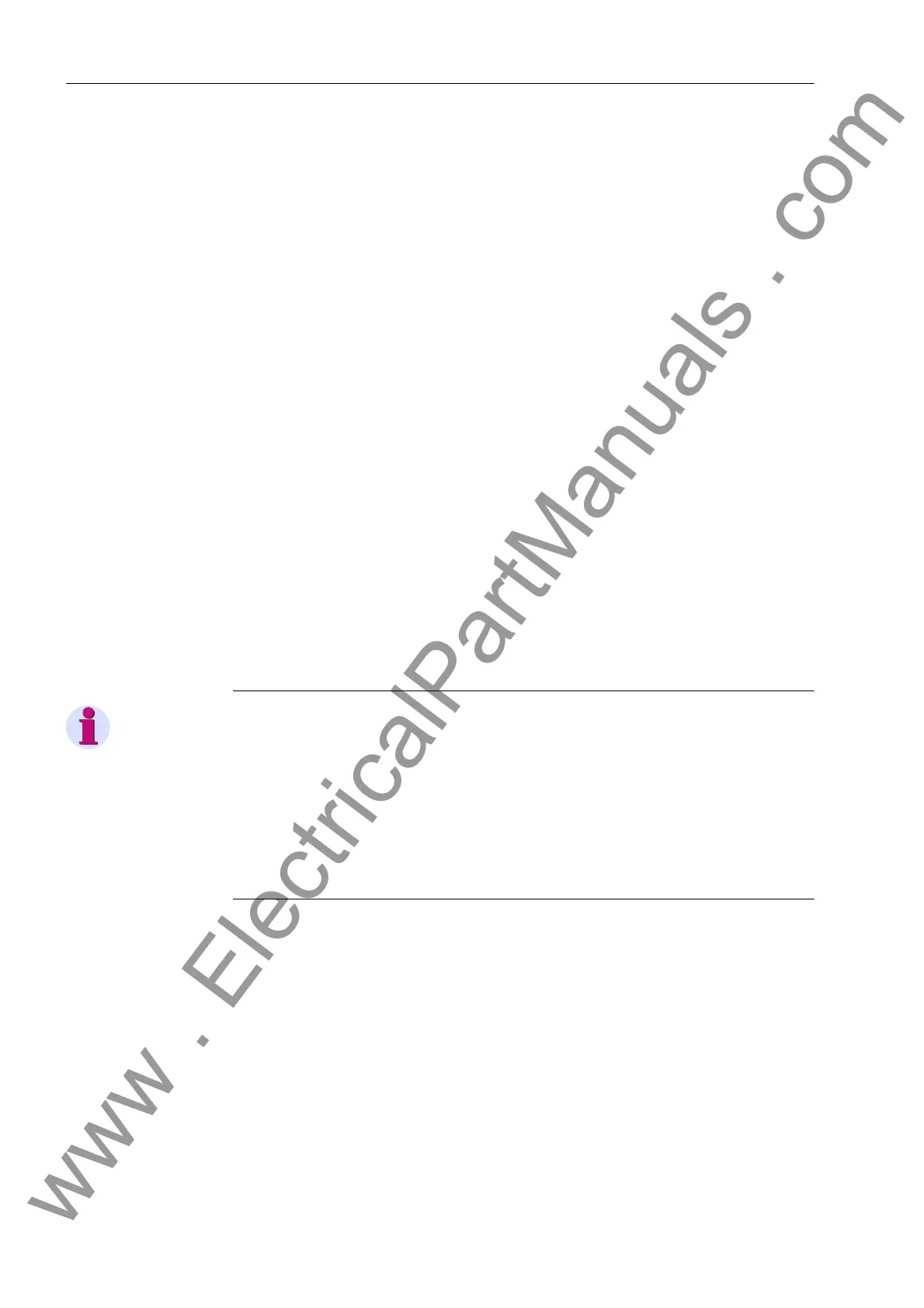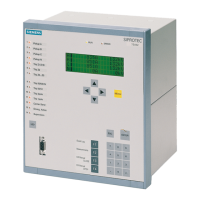2 Functions
146
7SD5 Manual
C53000-G1176-C169-1
fault resistance (e.g. overhead lines without earth wire) are expected on lines with an
infeed at both ends and load transfer in the direction of the line (export).
Different delay times can be set for single- and multiple-phase faults in the first zone:
T1-1phase (address 1605) and T1-multi-phase (address 1606). The first zone
is typically set to operate without additional time delay.
For the remaining zones the following correspondingly applies:
X(Z2) (address 1613), R(Z2) Ø-Ø (address 1612), RE(Z2) Ø-E (address 1614);
X(Z3) (address 1623), R(Z3) Ø-Ø (address 1622), RE(Z3) Ø-E (address 1624);
X(Z4) (address 1633), R(Z4) Ø-Ø (address 1632), RE(Z4) Ø-E (address 1634);
X(Z5)+ (address1643) for forward direction, X(Z5)- (address 1646) for reverse di-
rection, R(Z5) Ø-Ø (address 1642), RE(Z5) Ø-E (address 1644).
For the second zone it is also possible to set separate delay times for single- and multi-
phase faults. In general the delay times are set the same. If stability problems are ex-
pected during multiple-phase faults a shorter delay time can be considered for T2-
multi-phase (address 1616) while a higher setting for single phase faults may be
tolerated T2-1phase (address 1615).
The zone timers for the remaining zones are set with the parameters T3 DELAY (ad-
dress 1625), T4 DELAY (address 1635) and T5 DELAY (address 1645).
If the device is provided with the capability to trip single-pole, single-pole tripping is
then possible in the zones Z1 and Z2. While single-pole tripping usually applies to
single-phase faults in Z1 (if the remaining conditions for single-pole tripping are satis-
fied), this may also be selected for the second zone with address 1617 Trip 1pole
Z2. Single pole tripping in zone 2 is only possible if this address is set to YES. The
default setting is NO.
Note
For instantaneous tripping (undelayed) in the forward direction, the first zone Z1
should always be used, as only the Z1 and Z1B are guaranteed to trip with the shortest
operating time of the device. The further zones should be used sequentially for
grading in the forward direction.
If instantaneous tripping (undelayed) is required in the reverse direction, the zone Z3
should be used for this purpose, as only this zone ensures instantaneous pickup with
the shortest device operating time for faults in the reverse direction. This setting is also
recommended in teleprotection BLOCKING schemes.
Blocking of Zone Z1 If the main protection functions - differential protection and distance protection -
operate in parallel, the distance protection of Zone Z1 may pick up before the differen-
tial protection (e.g. in the case of close-up faults). If this is desired, the distance pro-
tection works as a „booster“ stage for fast tripping. If the fast tripping acts on one end
of the line only, accelerated tripping of zone Z1 is not desired (see also Section
2.5.1.4).
There are two ways of blocking Z1. If the device operates in differential protection
mode, zone Z1 can be blocked by setting a parameter (address 1533 Z1 blkd by
diff). Another way of blocking the zone is to set a binary input (No. 3610 „>BLOCK
Z1-Trip“).
www . ElectricalPartManuals . com

